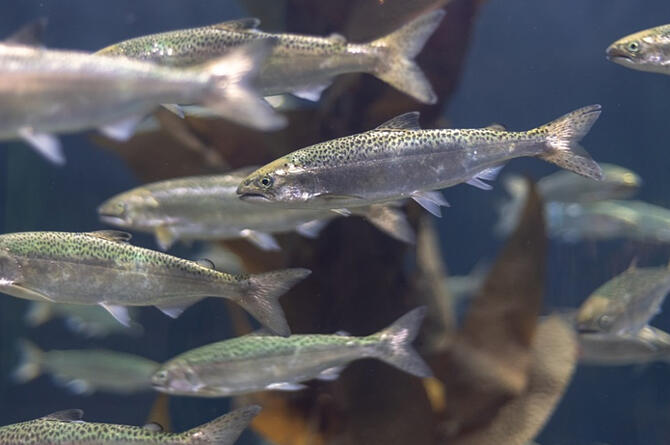Salmon populations have been artificially propagated through hatching, rearing, and release for over half a century to protect them as a resource. However, it is essential to release healthy juveniles to increase the number of returning salmon to the area.
Currently, one way to determine the health of juvenile salmon is to check their body mass, measured by anesthetizing the fry and using calipers or electronic scales.
While a technology to automatically measure salmon fry while they swim is desirable, developing such technology for hatchery‐reared salmon fry has been challenging due to their small size (30 to 40 mm in length).

However, Professor Mamoru Minami and Research Associate Renya Takahashi from Okayama University's Graduate School of Natural Science and Technology have utilized the parallax abilities of a compound‐eye camera to successfully measure the size of hatchery‐reared salmon fry using an automated measurement system based on spatial measurement technology.
The research team investigated spatial measurement using stereo vision and successfully developed a computer vision system that can measure the three‐dimensional position and orientation of arbitrary objects.
By measuring a swimming fish's 3D position and orientation, the distance between the camera and the fish can be calculated, enabling accurate measurement of the fish's dimensions.
The researchers collaborated with Tsutomu Abe, of Abea Corporation, a company that develops and sells fishery‐related equipment in Hokkaido and conducted an experiment from February 6 to 8 to automatically measure the dimensions of swimming salmon fry. During the experiment, the length of the swimming fry was measured using a tank for in‐air measurements during the day and an in‐water camera for in‐water measurements at night in a breeding pond.
Previous research had successfully measured the size of Oryzias latipes and Squalidus gracilis gracilis, but this experiment showed that a new method using a compound‐eye camera could also be used to measure the size of the fry.
Although accurate measurement during nighttime is challenging due to lower illumination degrading the screen, the fry swim more slowly and tend to swim in smaller groups, making it easier to measure them than during the day. These advantages make nighttime measurement a viable option.
Minami, who invented a method of measuring position and orientation using stereo vision, has now founded a venture company called Visual Servo to promote the widespread use of this technology and its applications.
This article has been translated by JST with permission from The Science News Ltd. (https://sci-news.co.jp/). Unauthorized reproduction of the article and photographs is prohibited.




